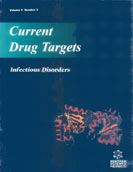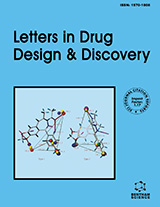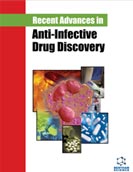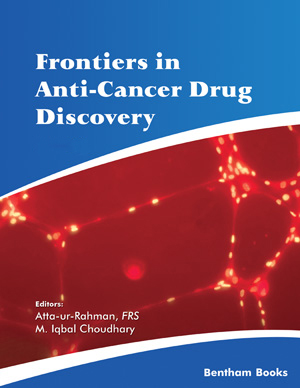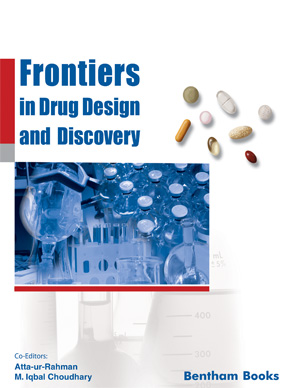Abstract
Psoriasis is characterized by sustained T cell activation by antigen-presenting cells (APCs) in the lesions, and by a deviation of T cell differentiation to type 1 helper T and type 1 cytotoxic T cells, although no specific antigens have yet been determined. These characteristics are at least promoted by decreased IL-10 expression and the increased IL-12 expression observed in both the skin and stimulated peripheral blood mononuclear cells of psoriatic patients. Some of the cytokines produced by activated T cells are suspected to stimulate the proliferation of psoriatic keratinocytes. Among them, interferon-γ is the most likely candidate, although interferon-γ does not promote the growth of normal keratinocytes. In addition to the abnormal proliferation, psoriatic keratinocytes show abnormal differentiation and resistance to apoptosis. So far, however, it is still unknown whether these phenotypic and functional characteristics of psoriatic keratinocytes are only the consequences of the stimulation by activated T cells or are at least based on an inherent susceptibility. Recently, it has become clear that chemokines derived from activated keratinocytes or endothelial cells play a crucial role in recruiting T cells in the skin and inducing the neutrophilic infiltration that leads to the formation of subcorneal pustules (Munros microabscess). Finally, recent developments in the detection and analysis of gene expression have revealed the molecules responsible for these steps. Some of them have become target molecules for the treatment of psoriasis. And indeed, it has become possible now to treat patients with new, innovative drugs.
Keywords: chemokine, adhesion molecule, costimulatory molecule, dendritic cell, cytokine, apoptosis, neutrophil, th1 cell
Current Drug Targets - Inflammation & Allergy
Title: Immunopathogenesis of Psoriasis
Volume: 3 Issue: 2
Author(s): Maki Ozawa and Setsuya Aiba
Affiliation:
Keywords: chemokine, adhesion molecule, costimulatory molecule, dendritic cell, cytokine, apoptosis, neutrophil, th1 cell
Abstract: Psoriasis is characterized by sustained T cell activation by antigen-presenting cells (APCs) in the lesions, and by a deviation of T cell differentiation to type 1 helper T and type 1 cytotoxic T cells, although no specific antigens have yet been determined. These characteristics are at least promoted by decreased IL-10 expression and the increased IL-12 expression observed in both the skin and stimulated peripheral blood mononuclear cells of psoriatic patients. Some of the cytokines produced by activated T cells are suspected to stimulate the proliferation of psoriatic keratinocytes. Among them, interferon-γ is the most likely candidate, although interferon-γ does not promote the growth of normal keratinocytes. In addition to the abnormal proliferation, psoriatic keratinocytes show abnormal differentiation and resistance to apoptosis. So far, however, it is still unknown whether these phenotypic and functional characteristics of psoriatic keratinocytes are only the consequences of the stimulation by activated T cells or are at least based on an inherent susceptibility. Recently, it has become clear that chemokines derived from activated keratinocytes or endothelial cells play a crucial role in recruiting T cells in the skin and inducing the neutrophilic infiltration that leads to the formation of subcorneal pustules (Munros microabscess). Finally, recent developments in the detection and analysis of gene expression have revealed the molecules responsible for these steps. Some of them have become target molecules for the treatment of psoriasis. And indeed, it has become possible now to treat patients with new, innovative drugs.
Export Options
About this article
Cite this article as:
Ozawa Maki and Aiba Setsuya, Immunopathogenesis of Psoriasis, Current Drug Targets - Inflammation & Allergy 2004; 3 (2) . https://dx.doi.org/10.2174/1568010043343868
| DOI https://dx.doi.org/10.2174/1568010043343868 |
Print ISSN 1568-010X |
| Publisher Name Bentham Science Publisher |
Online ISSN 1568-010X |
 2
2Related Articles
-
Effect of Probenecid on the Pain-Related Behaviour and Morphological Markers in Orofacial Formalin Test of the Rat
CNS & Neurological Disorders - Drug Targets Current and Novel Therapies for Hepatitis B Virus Infection
Mini-Reviews in Medicinal Chemistry Meet Our Editorial Board Member:
Current Tissue Engineering (Discontinued) Molecular Hybrids of N-Phthaloylglycyl Hydrazide and Hydrazinecarbothioamide with Anti-inflammatory and Anti-oxidant Activities
Current Organic Synthesis CPP Mediated Insulin Delivery: Current Status and Promising Future
Current Pharmaceutical Biotechnology Human Recombinant Relaxin (Serelaxin) as Anti-fibrotic Agent: Pharmacology, Limitations and Actual Perspectives
Current Molecular Medicine A Local, Bottom-Up Perspective on Sleep Deprivation and Neurobehavioral Performance
Current Topics in Medicinal Chemistry TNF Binding Protein of Variola Virus Acts as a TNF Antagonist at Epicutaneous Application
Current Pharmaceutical Biotechnology ATP Binding Cassette Transporter A1 (ABCA1) Associated Proteins:Potential Drug Targets in the Metabolic Syndrome and Atherosclerotic Disease?
Current Pharmaceutical Biotechnology Multiple Roles of the Extracellular Matrix in Inflammation
Current Pharmaceutical Design The Use of Hematopoietic Growth Factors in the Treatment of Acute Leukemia
Current Pharmaceutical Design The Role of Alpha1-Antitrypsin Deficiency in Respiratory Disease
Anti-Inflammatory & Anti-Allergy Agents in Medicinal Chemistry Phytocystatins and their Potential to Control Plant Diseases Caused by Fungi
Protein & Peptide Letters Patent Selections
Recent Patents on Food, Nutrition & Agriculture Pharmaceutical Nanotechnology United States Patent Watch (July to September 2016)
Pharmaceutical Nanotechnology NK Cell, Monocyte and Non T Cell Biomarkers as Prognostic Indicators in Cancer Immunotherapy
Current Cancer Therapy Reviews New Therapeutic Strategies for Coeliac Disease: Tissue Transglutaminase as a Target
Current Medicinal Chemistry Targeted Drug Delivery Using Tuftsin-bearing Liposomes: Implications in the Treatment of Infectious Diseases and Tumors
Current Drug Targets Mitochondrial Dysfunction and Oxidative Stress in Insulin Resistance
Current Pharmaceutical Design Activation of B Cells by a Dendritic Cell-Targeted Oral Vaccine
Current Pharmaceutical Biotechnology


